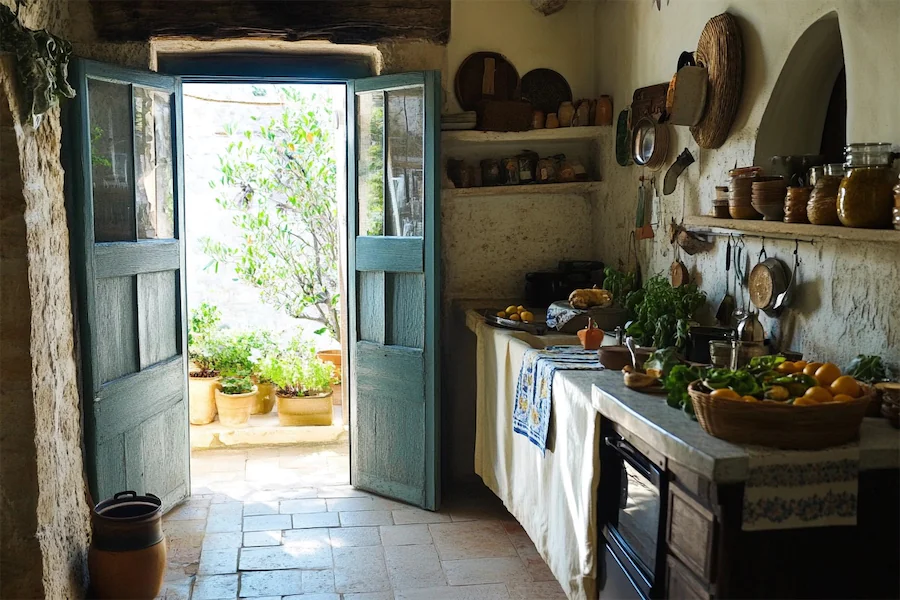A Mediterranean kitchen exudes warmth, charm, and timeless elegance, drawing inspiration from the coastal regions of Southern Europe. This article delves into the history, key features, applications, and considerations when designing a Mediterranean kitchen.
Introduction to Mediterranean Kitchens
Mediterranean kitchens are celebrated for their inviting ambiance, rich textures, and vibrant colors. They seamlessly blend functionality with aesthetic appeal, creating spaces that are both practical and visually captivating. Key elements include natural materials, warm color palettes, and intricate details that reflect the essence of Mediterranean coastal living.
History and Origins of Mediterranean Kitchens
The Mediterranean kitchen design draws inspiration from the traditional homes of countries bordering the Mediterranean Sea, such as Spain, Italy, and Greece. These designs emphasize natural materials and open spaces, reflecting a lifestyle centered around family gatherings and culinary traditions. The use of earthy tones, rustic wood, and handcrafted tiles mirrors the natural landscapes and cultural heritage of the region.
Key Features of Mediterranean Kitchens
Mediterranean kitchens are distinguished by several hallmark features:
- Warm Color Palettes: Utilization of rich, earthy tones such as terracotta, ochre, and sun-baked clay, often complemented by vibrant blues and greens reminiscent of the sea and sky.
- Natural Materials: Incorporation of stone countertops, wooden cabinetry with distressed finishes, and terracotta or ceramic tile flooring to add rustic charm.
- Architectural Details: Features like arched doorways and windows, exposed wooden beams, and textured walls evoke traditional Mediterranean architecture.
- Handcrafted Tiles: Use of intricately patterned, hand-painted tiles for backsplashes or decorative accents adds a personalized touch.
- Wrought Iron Accents: Elements such as wrought iron light fixtures, cabinet hardware, and pot racks contribute to the old-world character.
Applications of Mediterranean Kitchens
The versatility of Mediterranean kitchen designs allows them to be adapted to various settings:
- Traditional Homes: Enhancing the classic appeal with warm colors and rustic materials.
- Modern Residences: Introducing Mediterranean elements can add warmth and texture, creating a balanced and inviting space.
- Open-Concept Layouts: The emphasis on communal cooking and dining aligns well with open floor plans, fostering a sense of togetherness.
Considerations When Choosing a Mediterranean Kitchen
When planning a Mediterranean kitchen, consider the following:
- Space and Layout: Ensure the design accommodates functional work zones and facilitates easy movement, reflecting the communal nature of Mediterranean cooking.
- Material Selection: Opt for durable, high-quality natural materials that age gracefully and require minimal maintenance.
- Personal Style: Incorporate elements that reflect personal taste while adhering to Mediterranean design principles to create a space that feels both timeless and uniquely yours.
Conclusion
Mediterranean kitchens offer a harmonious blend of tradition and functionality, creating inviting spaces that stand the test of time. By understanding their history, key features, and applications, you can make informed decisions to design a kitchen that embodies enduring elegance and practicality.
